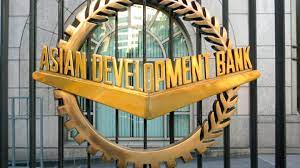The Pacific is expected to sustain its economic recovery, with growth across all of Asian Development Bank’s (ADB) Pacific developing member countries this year, according to the Asian Development Outlook (ADO) April 2023, ADB’s flagship economic publication, released today.
Pacific economies expanded by an average of 5.2 percent in 2022 as borders reopened and business activity resumed following the COVID-19 pandemic. Growth in the Pacific is expected to continue albeit moderating to an average of 3.3 percent in 2023 and 2.8 percent in 2024 with all 14 Pacific economies projected to expand over the period.
“A broad-based recovery across the Pacific is now on the horizon as the impact of the pandemic recedes and economies reopen,” said ADB Director General for the Pacific Leah Gutierrez. “But this recovery faces several headwinds, including structural risks from disaster impacts and climate change. To help manage these challenges, growth-enhancing reforms such as improving human capital and financial resources should be embraced to help rebuild resilient and sustainable economies.”
Among external risks, high global fuel prices due to the Russian invasion of Ukraine are compounding inflationary pressures in the Pacific through higher transportation costs and costs of imports. On average, inflation in the Pacific is projected to reach 5.0 percent in 2023, before slightly easing to 4.4 percent in 2024. Elevated inflation and the prospect of higher interest rates will weigh on the world economy over the forecast period.
In 2022, growth in Papua New Guinea (PNG), the biggest economy in the Pacific, rebounded on normalisation of economic activity and increased production in the resource sector. Increased mining activities and liquefied natural gas production, supported by elevated commodity prices, should contribute to growth of 2.4 percent in 2023 and 2.6 percent in 2024.
Tourism will continue as the main driver of growth for Fiji in 2023. The subregion’s second-largest economy is projected to record 6.3 percent growth in 2023, which will moderate to 3.0 percent in 2024. The ADB report says as travel normalises further, Fiji will increasingly face intense competition from other tourist destinations, such as Indonesia and Thailand. Increasing emigration of skilled workers, due to enhanced access to labour mobility schemes in Australia and New Zealand, will also pose a significant challenge for Fiji’s tourism sector and wider economy.
COVID-19 restrictions in Solomon Islands caused the worst economic contraction in 20 years in 2022. ADO April 2023 expects the Solomon Islands economy to grow by 3.0 percent in 2023, spurred by the country’s hosting of the Pacific Games. To be held for two weeks in mid-November, the games are expected to bring more than 5,000 athletes and staff from 24 nations. The report says growth will remain relatively robust at 2.5 percent in 2024 on higher government spending in the lead-up to national elections.
Growth in Vanuatu is forecast to slow to 1.0 percent this year following two category 4 cyclones and earthquakes in March 2023. Economic recovery will partly depend on the revival of tourism, but frequent disasters threaten the outlook and divert resources towards reconstruction. According to the ADO April 2023, growth is forecast to accelerate to 4.2% in 2024 driven by reconstruction and recoveries in agriculture, and trade and tourism services.
The South Pacific economies of the Cook Islands, Niue, Samoa, and Tonga have struggled to recover from three years of economic disruption. Growth in the Cook Islands is projected to be 11.2 percent in 2023 and 9.1 percent in 2024 due to a steady recovery in tourist arrivals and public investment. Economic recovery in Niue will likewise depend on tourism, with travel having been frequently interrupted by new COVID-19 cases. Meanwhile, mobilisation of public investment projects and the initial return of tourists will likely support growth in Samoa—4.8 percent in 2023 and 2.5 percent in 2024. Eased mobility and a revival in public investment in Tonga will likely increase gross domestic product by 2.5 percent in 2023 with growth expanding further to 3.2 percent in 2024.
Following the full reopening of international borders, a pick-up in public construction and a nascent recovery in tourism is expected to boost recovery in the North Pacific economies. Economic expansion of 4.1 percent is expected in the Federated States of Micronesia in 2023 before slowing to 0.5 percent in 2024, while the Marshall Islands economy is projected to return to growth of 1.5 percent in 2023 before picking up to 2.0 percent in 2024. Growth in the tourism-driven economy of Palau is expected to reach 3.8 percent in 2023 then accelerating to 6.5 percent in 2024 as demand from its main tourist markets improve. The report says the anticipated renewal of compacts with the United States brightens economic and fiscal prospects but requires strengthened implementation capacity and public financial management.
Three years into the pandemic, the Central Pacific economies have started on the road to recovery, with growth expected in all three economies. Economic expansion of 2.3 percent is expected in Kiribati in 2023, picking up to 2.8 percent in 2024. Nauru’s economic growth will edge up to 1.8 percent in 2023 and to 2.2 percent in 2024 while Tuvalu will see 2.5 percent growth in 2023 before slowing to 2.0 percent in 2024. The growth outlook in all three economies is driven by the rollout of public infrastructure projects, supported by the reopening of international borders.
SOURCE: ADB/PACNEWS















